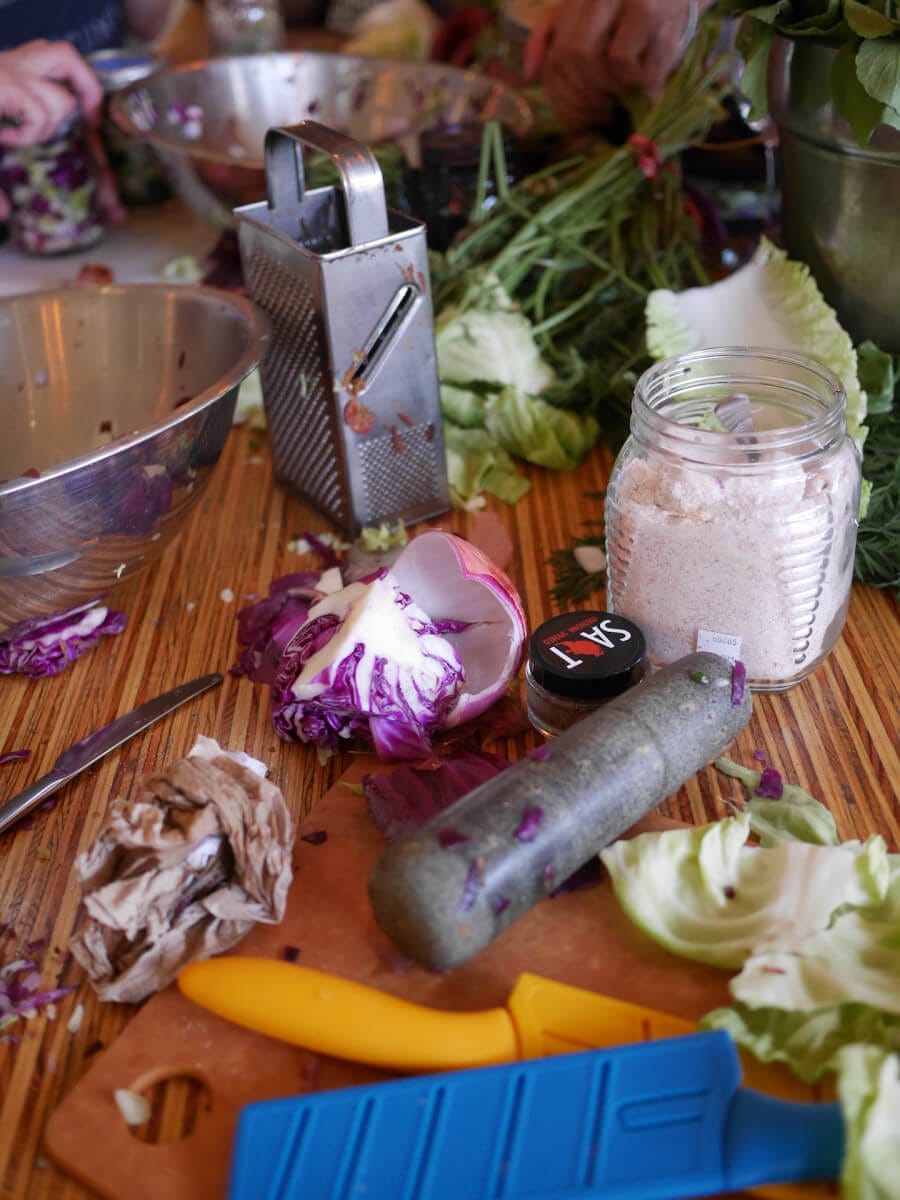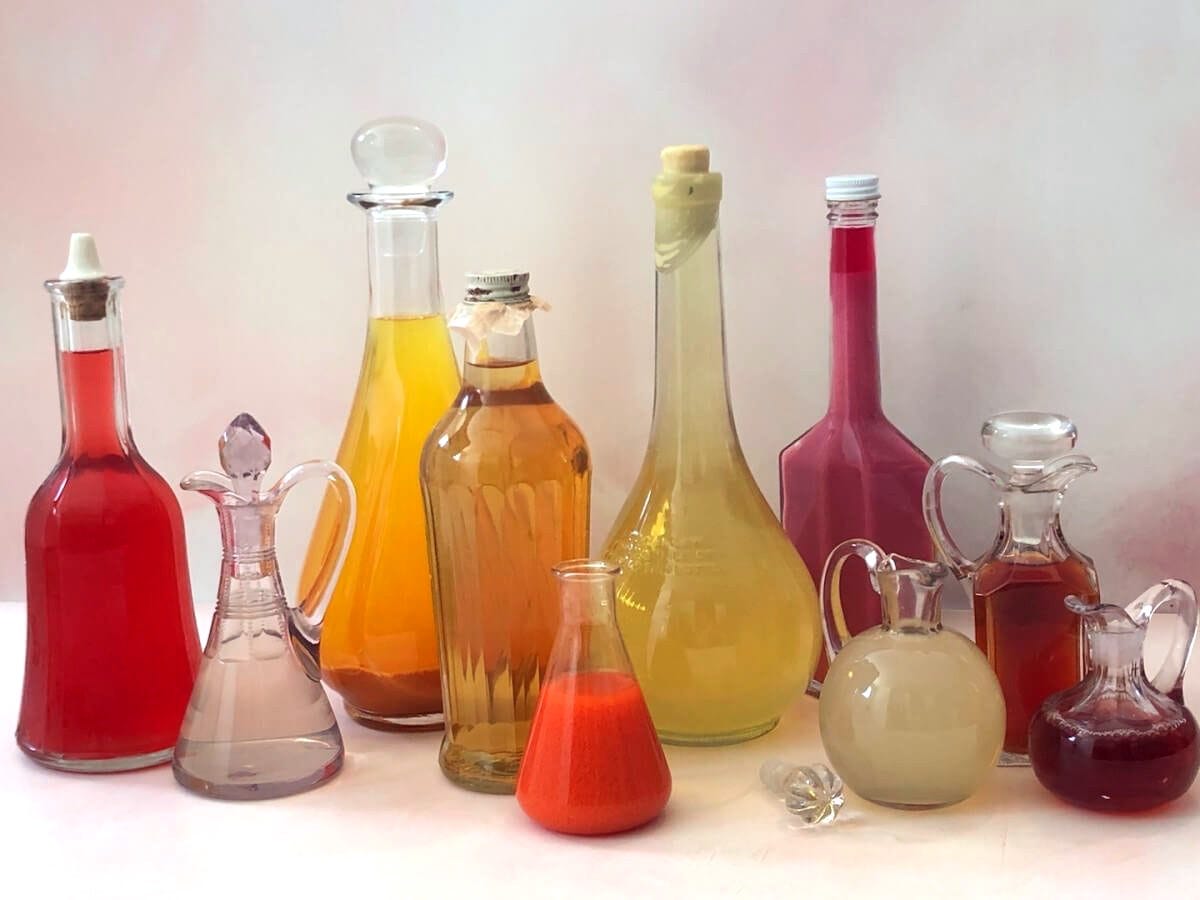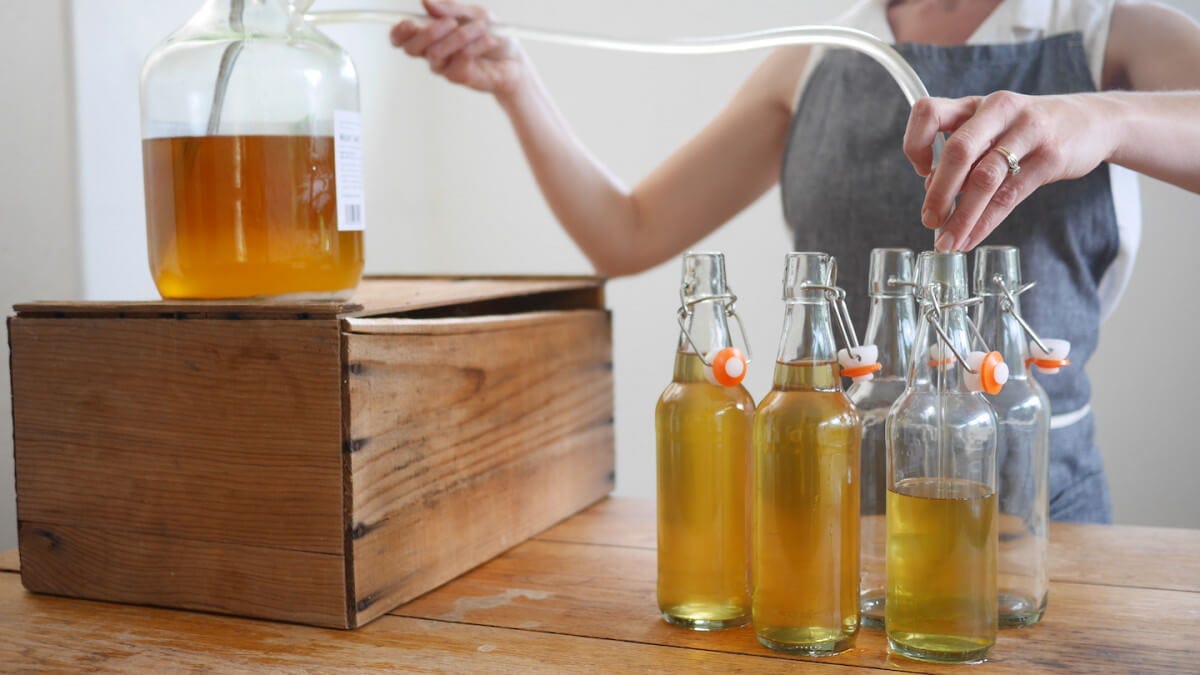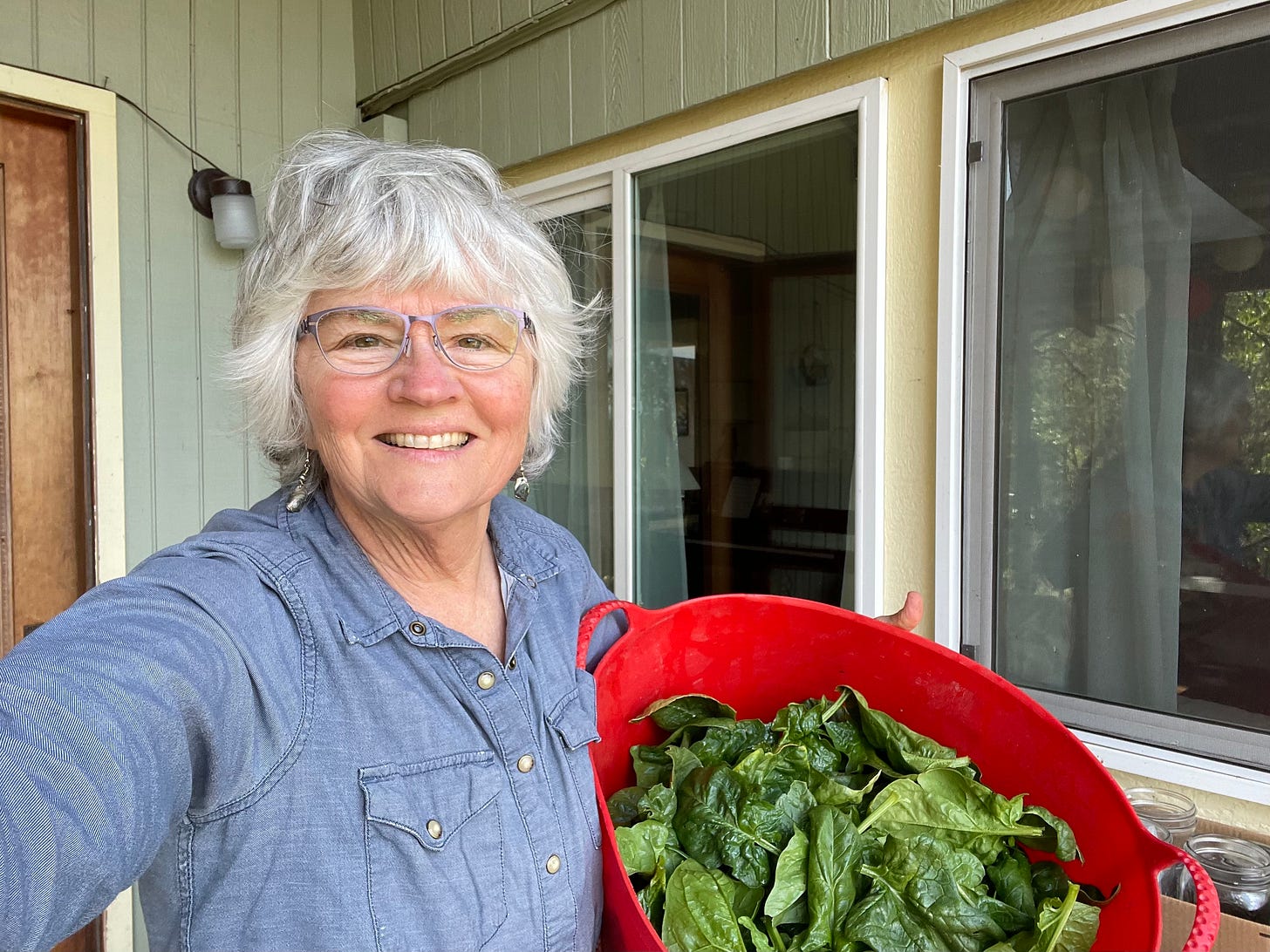What is fermentation?
How does it work? What are the benefits? May webinar reminder (compost)
Thank you for being here.
Many of you reading these words have been with TFS for a long time, some of you are members, and others are students. And in the last few months, many of you are brand new to our community. Welcome. It is also that time of year when the season changes dramatically — warmer or cooler, depending on which hemisphere you live in. Those of us heading into spring are excited about all the potential of the months ahead and are diving into new projects — like fermenting tempeh (for example. For those headed into winter, you are putting up harvests and nesting for the quiet days of winter. We thought it would be a good time to get back to basics. In the following weeks, we wanted to answer your questions. Please ask yours in the comments below. Meanwhile, today, let’s start with a look at what fermentation is and some simple definitions of the various food fermentation techniques used to make our favorite foods.
What is Fermentation?
If you ask five friends what fermentation is, you are likely to get at least five different answers that may or may not share anything. Fermentation is the chemical breakdown of a substance by bacteria, yeasts, or other microorganisms and enzymes, often resulting in effervescence and the release of heat. Enzymes are often produced by a fungus, like koji, and they break down complex organic compounds into simpler structures.
An Even Simpler Definition
Fermentation microorganisms — be they bacteria, yeast, or mold —digest foods, and what is left after they are finished is more easily digested by the microbes in our bodies. So the microbes in your kombucha, kefir, sauerkraut, kimchi, sourdough, pickles, beer, wine, cider or vinegar are doing the heavy lifting for the microbes waiting deep within you.
How Does Fermentation Work?
It’s transformation through collaboration. To create a fermented food, you are collaborating with specific communities of microbes to favor them and to help them overpower their rivals, who want to create something different and oftentimes know what we ultimately want to enjoy. Let’s look at a few of these so that you understand how this works.
Lactic Acid Fermentation

Bacteria that produce lactic acid as a byproduct of consuming carbohydrates are called Lactic Acid Bacteria or LAB. Lacto fermentation and fermentation using lactic acid bacteria to make cheese, yogurt, charcuterie, sauerkraut, kimchi, and pickles. These bacteria acidify foods and lower the pH in the process of fermentation, usually through a series of lactic acid teams that take their respective turns lowering the food’s pH, creating an environment that is inhospitable to other bacteria.
Lactic acid bacteria also participate as part of the team that brings us other fermented foods like the sour in sourdough bread and kombucha, even though yeast is doing much of the work. Miso is another example of a food that LAB is an important player in, but not the only.
LAB Fun Fact
Let’s leave our food for just a moment and go a step back in time to when our vegetables are growing in the ground. This is a longer, more complicated story1, but in part of it scientists wanted to see if they could use sauerkraut juice (no, really!) for soil remediation. Sauerkraut juice has lactic acid bacteria, Lactobacillus plantarum, and it is reported to degrade glyphosate in cow rumens.
So many reasons to love lactic acid bacteria. And eat your sauerkraut.
Alcoholic Fermentation
Yeasts digest carbohydrates, including sugars, and make alcohol in the process. It's a byproduct for them, something desirable for many of us. In the case of sourdough bread, the yeasts produce another byproduct, carbon dioxide, and those little air bubbles deep within the loaf get trapped. The same bread yeast produces alcohol, but you never notice a buzz from your sourdough because the alcohol is baked off.
In the case of fruit wines, be they your favorite red or white from grapes or hard cider from apples, it's basically the same simple process. Set up the right environment so the preferred yeasts can consume all those sugars in the fruit, producing carbon dioxide which is vented off in the process, and ethanol, which is kept and enjoyed by us.
Acetic Acid Fermentation

Just as there are bacteria waiting to turn your vegetables’ carbohydrates to lactic acid, or yeasts to turn your fruits’ carbohydrates to alcohol, there are bacteria waiting to turn that alcohol into acetic acid. These two fermentations, alcoholic fermentation and acetic acid fermentation, often happen at the same time. Your kombucha project on the counter is a complex community of yeasts producing alcohol, which is then consumed by bacteria that produce acetic acid. Leave that half-enjoyed bottle of wine out overnight, and acetic acid bacteria have a way of finding it, and by the next afternoon, that’s often why it's already heading to vinegar land.
Fungal Fermentation
Other resources often ignore this type of fermentation, but it shouldn’t be because it has been used in many forms worldwide for thousands of years. In simple terms, a specific type of fungi is cultivated on something we want to eat, and that fungi grows a cobweb of filaments on and in the vegetable, meat, or grain we want to eat, pre-digesting it for us using enzymes. In the case of meat, it can be Koji (Aspergillus oryzae) grown on meat to produce delicious charcuterie. In the case of tempeh, it's the fungus Rhizopus oligosporus, which happily grows upon freshly cooked legumes and grains. (And we promise to get deeper into koji in subsequent posts.)
What are the Benefits of Fermented Foods?
Hopefully this quick review is a good reminder of how wonderful it is that microbes can process our food. The most important takeaway so far might be that it's a natural process that we humans seek to control so that it consistently and safely produces what we want to eat or drink. That might seem manipulative but the microbes we want to succeed in are likely very happy for the helping hand to overwhelm all their microbial competition. Now let's get to the question of why ferment foods.
4 Roles of Fermentation
1. Flavor. We go from flour and water to delicious sourdough bread. From grapes to wine, from apples to vinegar. From peppers to hot sauce. Cooked beans to tempeh or miso. I could go on and on. In all of these examples, the work of the microbes changed the flavor of the original food/ingredient to something that tastes different as a result of their work. Sometimes, this is obvious because fermentation is responsible for the flavor we associate with the food, such as kimchi or kombucha. Other times it’s just a step in the process, and we are often surprised to learn it has been fermented, think coffee or chocolate.
2. Preservation. The acids or alcohols produced in fermentation act as a preservative, keeping other microbes from continuing the fermentation process in a different direction, like rot. Let’s say you have an abundance of vegetables in your garden this summer, and you want to preserve them for the winter months. You need to stop the natural process of decomposition that begins as soon as you pick them. You could water bath can them, or pressure can them, depending upon the safety recommendations of the vegetable. You could turn the fruit into preserves and then can it. In those cases, you are killing all of the microbes through heat. Another way would be to ferment them and allow the microbes you want to do the work for you.
3. Enrichment. Fermentation improves the nutritional value of cereal grains, legumes, and vegetables by increasing the protein content or the availability of essential amino acids, essential fatty acids, and vitamins.
4. Detoxification. Our bodies are designed when properly functioning to eliminate wastes effectively. Fermented foods repair and feed our gut microbiota, giving our body’s natural detoxification team a boost.
Probiotics: Dead or Alive
We can’t have a discussion about the health benefits of fermented foods without mentioning probiotics, because honestly, they are what gets the most press. These come from the live microbes in the foods that convey a positive effect in our body (probiotics), or the carbohydrates and starches it contains that will not be digested in our small intestine but will make it to our colon and are beneficial to feed the good gut bacteria there (prebiotics) or finally the microbial metabolites (postbiotics) which include the played out dead bodies of the microbes that did all this good work. It's a complex mixture of all three that is usually behind the fact that these fermented foods are healthy for our bodies.
Member Reminder: May Webinar
May webinar, Compost Your Kitchen Waste with Earthworms, and all archives of past webinars.
Our Earthworm webinar, May 7 at 11 a.m. PT, will take us to a terraced garden on a clay hillside, where our presenter, Vicki Hames, has been building soil with earthworms for over 40 years. There will be a live Q and A after her presentation. This webinar is free for members but available for a la carte purchase for $12. Link is in your Member Headquarters, along all the great archived content.
One last resource on the theme of compost
A few years ago, we met Tina Trout, who is working in all aspects of fermentation through soil building. She just launched a new Zine you might want to check out.
Saga of Soggy Sauerkraut
Harle, D., McNeill, M. J., Huber, D. M., Maney, M., Cano, R. J., & Carlin, M. (2024). Saga of Soggy Sauerkraut. HortScience, 59(11), 1618-1628. Retrieved Jan 12, 2025, from https://doi.org/10.21273/HORTSCI18041-24





